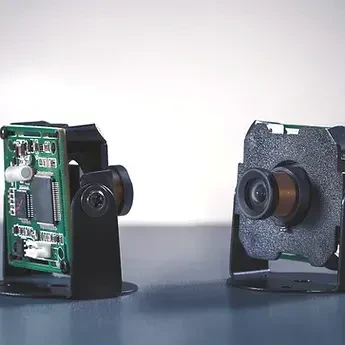The rapid advancement of technology in healthcare has opened new avenues for improving patient safety and monitoring capabilities. Among these innovations, the integration of ONVIF (Open Network Video Interface Forum) cameras into medical devices stands out as a critical enhancement. This integration not only bolsters the safety and security of patients but also streamlines clinical operations. This blog explores the benefits and challenges of incorporating ONVIF cameras into medical devices, emphasizing the transformative potential of this technology in healthcare settings.
Understanding ONVIF Technology
ONVIF is an open standard designed to facilitate the interoperability of IP-based physical security products, including network cameras, video recorders, and video management software. By adhering to ONVIF protocols, devices from different manufacturers can seamlessly communicate and integrate. This standardization simplifies the installation process and enhances the flexibility of surveillance solutions in various environments, including hospitals and clinics.
The healthcare industry can leverage ONVIF technology to create robust surveillance systems that enhance patient safety, protect sensitive data, and ensure compliance with regulatory standards. By utilizing ONVIF cameras, medical devices can be equipped with advanced video monitoring capabilities that provide real-time insights into patient care.
Enhancing Patient Safety
One of the primary benefits of integrating ONVIF cameras into medical devices is the enhancement of patient safety. These cameras provide continuous monitoring, allowing healthcare professionals to observe patients remotely. This capability is particularly crucial in high-stakes environments, such as intensive care units (ICUs) or emergency rooms, where timely intervention can significantly impact patient outcomes.
Real-Time Monitoring and Alerts
With ONVIF cameras, healthcare providers can monitor patient conditions in real-time, ensuring that any changes are promptly addressed. The cameras can be integrated with alarm systems that notify staff of unusual activity or emergencies, such as patient falls or distress signals. This proactive approach to monitoring minimizes response times and enhances the overall quality of care.
Improved Compliance and Documentation
Integrating ONVIF cameras into medical devices can also improve compliance with healthcare regulations. Hospitals are required to maintain accurate records of patient care and interventions. Video surveillance provides a reliable means of documenting patient interactions and procedures, serving as an objective reference in case of disputes or audits. Furthermore, the footage can be invaluable for training and quality assurance purposes, helping staff improve their skills and adherence to protocols.
Streamlining Operations
The integration of ONVIF cameras can streamline hospital operations, leading to improved efficiency and reduced costs. By monitoring critical areas within healthcare facilities, such as operating rooms and patient wards, these cameras help optimize staff allocation and resource management.
Efficient Staff Allocation
Healthcare facilities often face staffing challenges, especially in high-demand areas. ONVIF cameras can provide insights into patient flow and occupancy rates, enabling administrators to make informed decisions about staff allocation. By identifying peak times and areas with high patient volume, hospitals can ensure that the right number of healthcare professionals are available when needed most.
Enhanced Security Measures
In addition to patient monitoring, ONVIF cameras play a crucial role in enhancing security within healthcare settings. They deter theft and vandalism while ensuring that unauthorized personnel do not access sensitive areas. Hospitals can monitor entry and exit points, reducing the risk of breaches that could compromise patient safety and data security.
Challenges of Integration
Despite the numerous benefits, integrating ONVIF cameras into medical devices presents challenges that must be addressed to maximize their potential.
Data Privacy and Security
The implementation of surveillance technology raises concerns about patient privacy and data security. Medical facilities must comply with regulations such as the Health Insurance Portability and Accountability Act (HIPAA), which mandates stringent protections for patient information. Therefore, it is essential to establish robust security protocols to safeguard recorded footage and ensure that access is restricted to authorized personnel only.
Technical Complexity
Integrating ONVIF cameras with existing medical devices can be technically challenging. Compatibility issues may arise, requiring healthcare facilities to invest in additional resources or training. A thorough assessment of current systems and careful planning can help mitigate these complexities and ensure a smooth integration process.
The Future of ONVIF Integration in Healthcare
As the healthcare landscape continues to evolve, the integration of ONVIF cameras into medical devices will play a pivotal role in enhancing patient safety and operational efficiency. Innovations in artificial intelligence (AI) and machine learning are expected to further enhance the capabilities of these cameras, enabling predictive analytics and automated monitoring solutions.
Intelligent Surveillance Solutions
The future of ONVIF camera integration lies in intelligent surveillance systems that can analyze data in real-time. By leveraging AI, these systems can identify patterns and anomalies, enabling healthcare providers to proactively address potential safety issues before they escalate. For instance, AI algorithms could detect changes in patient behavior or vital signs, alerting staff to potential emergencies.
Collaboration and Interoperability
The ongoing development of ONVIF standards will promote greater collaboration among healthcare technology providers. This interoperability will facilitate the integration of various devices, creating a more cohesive and effective healthcare ecosystem. As more manufacturers adopt ONVIF protocols, healthcare facilities will benefit from a wider range of innovative solutions that enhance patient care.
Conclusion
Integrating ONVIF cameras into medical devices presents a transformative opportunity for healthcare facilities seeking to enhance patient safety and streamline operations. By leveraging advanced surveillance technology, hospitals can provide real-time monitoring, improve compliance, and optimize resource allocation. However, addressing challenges related to data privacy and technical complexity is essential for successful implementation.
As the healthcare industry continues to evolve, the integration of ONVIF cameras will be instrumental in shaping a safer, more efficient healthcare environment. Embracing this technology not only enhances patient care but also positions healthcare providers to meet the demands of a rapidly changing landscape, ultimately leading to better health outcomes for patients worldwide.
To Know More About ONVIF cameras

